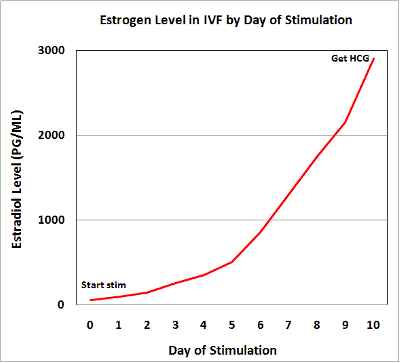Introduction
Assisted reproductive technique (ART) involves multiple steps, and each occurs at a specific time during the menstrual cycle. Sometimes the procedure begins in the month/s proceeding the actual ART cycle.
Preceding ART Cycle
- Sometimes oral contraceptive pills (OCPs) are begun
- Sometimes GnRH agonist (drug to prevent premature release of eggs) is initiated.
- Occasionally, an IVF cycle starts with a cycle day of the menstrual period without other medications
Ovarian Stimulation
This is the procedure to make sufficient follicles and eggs for assisted conception. Without stimulating medications, the ovaries will only produce one follicle (A) and mature egg per menstrual cycle (month). The success of IVF largely depends on growing multiple follicles at once. Injections of the natural hormones FSH and/or LH (gonadotropins) are used for this purpose. Additional medications are used to prevent premature ovulation.
There are several different types of stimulation protocols. Although all medication protocols more-or-less employ the same types of medications, specific protocols may help certain types of patients to have a better response than other types.
Common medications in ART include:
Clomiphene Citrate
- Used as first line of treatment in cases of anovulation
- Response to clomiphene induction is normally assessed by blood test (Day 21 serum progesterone) in normal cycles
- In intrauterine insemination (IUI) cycle, transvaginal ultrasound (TVS) is used to monitor the size of the developing follicle
Gonadotropin
- All of the commonly used IVF regimens include self-injections of a medication containing follicle stimulating hormone (FSH). Injectable FSH products are referred to as “gonadotropins”. The woman is stimulated with the injectable FSH medications for about 8-12 days until multiple mature size follicles (B) have developed
- With ovarian stimulation for IVF, the goal is to get at least 3 follicles at the egg retrieval procedure. Success rates are substantially higher when more eggs are recovered
- An overly vigorous ovarian response can occur if too many eggs develop. This is called OHSS (ovarian hyperstimulation syndrome) which could be dangerous, or conversely an inadequate response may also occur
Gonadotropin Releasing Hormone Analogue (GnRH analogue/agonist) OR GnRH antagonist with gonadotrophin
There are two principle ways that physicians ensure ovulation does not occur before egg retrieval. One involves pre-treatment of a patient with a GnRH agonist/analogue before gonadotropin injection. The other involves treatment after six or so days of stimulation with a GnRH antagonist during gonadotropin injection.
- GnRH Agonist
The primary role of this medication is to prevent a premature LH (luteinizing hormone) surge, which could result in the release of eggs before they are ready to be retrieved. Since GnRH-agonists initially cause a release of FSH and LH from the pituitary, they can also be used to start the growth of the follicles or initiate the final stages of egg maturation.
- GnRh antagonist
This is another class of medication used to prevent premature ovulation. They are typically administered several days after gonadotrophin stimulation when the developing follicles are around 10-12mm. Compared to GnRH agonist, GnRH antagonist requires much fewer injections.
HCG (Human Chorionic Gonadotrophin)
HCG injection is given when the estrogen level and the follicle measurements look best for successful outcome. The HCG shot is needed to induce final egg maturation. The egg retrieval is planned for 34-36 hours after HCG injection – shortly before the woman’s body might start to release the eggs (ovulate).
Ovarian response to induction therapy/ follicular growth and endometrium sonography
The ovarian response in all stimulation protocols are assessed by serial transvaginal ultrasound (TVS). Apart from follicular growth, endometrial thickness of the uterus is also measured to predict successful implantation.
Estrogen Level
Estrogen (i.e: estradiol) levels are usually under 60 pg/ml at cycle baseline and rise significantly as multiple follicles develop. During a cycle, apart from ultrasound follicle count, serum estradiol will be checked to monitor the response of ovarian stimulation. It could also be used to predict ovarian hyper stimulation syndrome (OHSS) if the level is very high.
Summary of Ovarian Stimulation
Ovarian stimulation is an important step in assisted conception. In IVF cycles, self-administer gonadotropin medication would stimulate the growth of multiple follicles. Apart from gonadotrophin, other medications e.g: GnRH agonist and GnRh antagonist are used in IVF to prevent premature ovulation. The development of multiple ovarian follicles are monitored by serial transvaginal ultrasound until the size of the follicles are deemed ‘ripe’ enough to undergo final maturation by HCG 34-36 hours prior to ovum pick up.
| Last Reviewed | : | 8 May 2017 |
| Writer | : | Dr. Roziana binti Ramli |
| Accreditor | : | Dr. Wan Abu Bakar bin Yusof |










